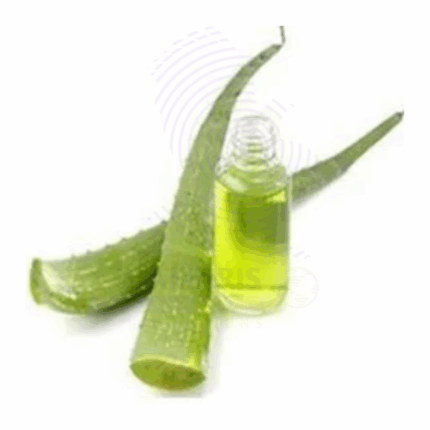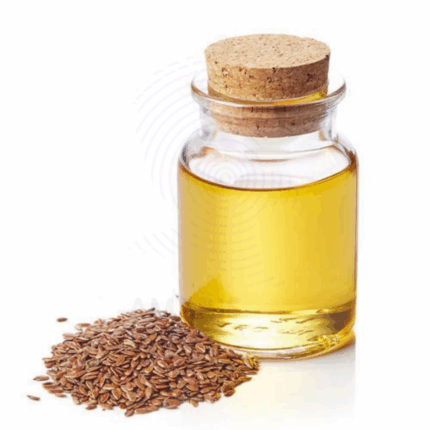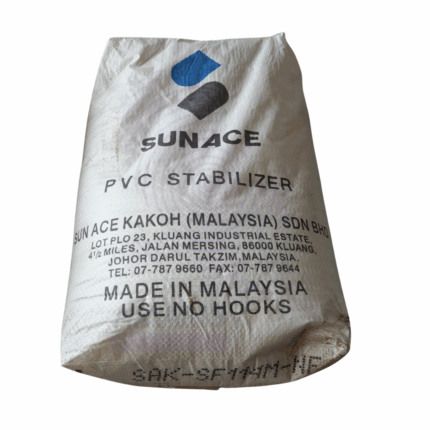
Aloe Vera Oil
$ 29.32 Original price was: $ 29.32.$ 29.22Current price is: $ 29.22.
Parallizer (UFABLEND)
Whatsapp Order
Product Description
Parallizer (UFABLEND) is a versatile liquid paralytic agent used primarily in the formulation of pesticides and herbicides to enhance the immobilization of target pests. It acts by disrupting the nervous system of insects and other pests, providing quick knockdown effects. UFABLEND is valued for its fast action, compatibility with other agrochemicals, and stability under various environmental conditions.
Description
Table of Contents
Toggle
Uses
Primary Uses
- Agriculture & Crop Protection
- Used as an active or synergistic ingredient in insecticide and pesticide formulations to rapidly paralyze pests.
- Enhances the effectiveness of herbicides by immobilizing resistant weed species.
- Applied in integrated pest management (IPM) programs for rapid pest control.
- Public Health & Vector Control
- Incorporated in formulations targeting disease vectors such as mosquitoes, flies, and cockroaches.
- Used in urban pest control sprays for quick knockdown of nuisance insects.
- Veterinary Applications
- Employed in ectoparasite control products for livestock and companion animals to immobilize ticks, fleas, and mites.
Secondary Uses
- Stored Product Protection
- Used to protect stored grains and food commodities from insect infestation by paralytic action.
- Household Pest Control
- Included in household insecticide sprays and foggers for rapid immobilization of common pests.
- Research Applications
Utilized in entomological studies to temporarily immobilize insects for examination and handling.
KEY PRODUCT FEATURES
Key Attributes
Basic Identification Attributes
- Chemical Name (IUPAC): Proprietary paralytic blend (composition varies)
- Common/Trade Name: Parallizer (UFABLEND)
- CAS Number: Proprietary mixture
- HS Code: 3808.94.00 (Insecticides)
- Synonyms: Paralytic agent; pest immobilizer; UFABLEND paralytic
Physical & Chemical Properties
- Physical State: Liquid
- Color & Odor: Clear to slightly colored; mild chemical odor
- pH: Neutral to slightly alkaline (approx. 6.5 – 8.0)
- Solubility: Miscible with water and common solvents
- Density: Approx. 1.0 – 1.1 g/cm³
Safety & Hazard Attributes
- GHS Classification: May be classified as hazardous depending on formulation
- Toxicity: Moderate toxicity; use with care to avoid exposure
- Exposure Limits: Follow label instructions and occupational exposure guidelines
Storage & Handling Attributes
- Storage Conditions: Store in a cool, dry place away from direct sunlight and heat sources
- Container Type: Supplied in sealed plastic or metal containers
- Shelf Life: Typically 12–24 months if stored properly
- Handling Precautions: Use protective gloves, goggles, and masks; avoid inhalation and skin contact
Regulatory & Compliance Attributes
- Registered under relevant agrochemical and pesticide regulatory bodies
- Complies with international safety and environmental standards for pesticides
- Labelled with proper hazard and use instructions according to regulations
Environmental & Health Impact
- Biodegradability: Varies by formulation; often designed for moderate environmental persistence
- Ecotoxicity: Potential toxicity to non-target aquatic organisms; use with caution
- Bioaccumulation: Low to moderate depending on active ingredients
- Safety: Handle responsibly to minimize risks to humans, animals, and environment
SAFETY HANDLING PRECAUTIONS
Safety Handling Precautions
- PPE Required: Gloves, protective eyewear, and respiratory protection recommended
- Handling Guidelines: Use in well-ventilated areas; avoid direct contact and inhalation
- Storage Measures: Keep containers tightly closed; segregate from incompatible materials
First Aid Measures
- Inhalation: Move to fresh air immediately; seek medical attention if symptoms develop
- Skin Contact: Wash affected area with soap and water; seek medical advice if irritation persists
- Eye Contact: Rinse thoroughly with water for at least 15 minutes; seek medical attention
- Ingestion: Do not induce vomiting; rinse mouth and seek immediate medical help
Firefighting Measures
- Fire Hazards: Combustible liquid depending on solvent content
- Extinguishing Media: Use foam, dry chemical, or CO₂ extinguishers
- Special Precautions: Avoid inhalation of combustion fumes; wear protective gear
- Hazardous Combustion Products: May produce carbon oxides and other toxic gases
Related products
PP Raffia 1003
PP Raffia 1003 is a polypropylene homopolymer resin commonly used for manufacturing raffia fibers and woven sacks. It offers high tensile strength, excellent dimensional stability, and good resistance to chemicals and environmental stress. This grade is ideal for producing durable woven fabrics used in packaging, agriculture, and construction applications.
Propylene PP Non Woven RH 38
Propylene PP Non Woven RH 38 is a polypropylene-based non-woven fabric known for its strength, durability, and lightweight properties. Manufactured through a process that binds polypropylene fibers without weaving, it results in a fabric that is breathable, resistant to chemicals and moisture, and highly versatile. This product is widely used in various industrial, medical, and consumer applications where disposable or reusable fabric is needed.
PVC K67
PVC K67 is a general-purpose polyvinyl chloride resin with a K-value of 67, indicating a medium molecular weight suitable for rigid applications. It is a white, free-flowing powder commonly used in the production of rigid PVC products such as pipes, fittings, profiles, and sheets. PVC K67 offers excellent processability, good mechanical strength, chemical resistance, and dimensional stability, making it ideal for a wide range of industrial and construction applications.
PVC Masterbatch
PVC Masterbatch is a concentrated mixture of pigments, additives, or fillers encapsulated in a PVC carrier resin, designed for direct addition into PVC processing applications. It offers an efficient and dust-free way to color, modify, or enhance the physical properties of PVC products. This masterbatch ensures excellent dispersion, consistent coloration, and improved processability. It is widely used in rigid and flexible PVC applications including construction, automotive, packaging, electrical, and consumer products.
PVC PE Wax
PVC PE Wax is a polyethylene-based wax additive used in PVC formulations to improve processing, lubrication, and surface finish. It serves as an internal and external lubricant in both rigid and flexible PVC products, enhancing extrusion, molding, and calendaring operations. It also contributes to better dispersion of fillers and pigments, reduced friction, and improved thermal stability. PE Wax for PVC is available in powder, flake, or granule form and is valued for its compatibility, thermal resistance, and cost-effectiveness.
PVC Stabilizer
PVC Stabilizer is a crucial additive used in the processing of polyvinyl chloride (PVC) to protect it from thermal degradation during manufacturing and throughout its service life. It ensures color stability, prevents chain scission, and enhances the durability of PVC products exposed to heat, light, and mechanical stress. PVC stabilizers are available in various types, including lead-based, calcium-zinc (Ca-Zn), organotin, and mixed metal stabilizers, each suited for different applications depending on regulatory, environmental, and performance requirements.
Solvent oil red 24 OSH
Solvent Oil Red 24 OSH is a bright, oil-soluble azo dye used primarily for coloring petroleum-based solvents, oils, waxes, and greases. Known for its excellent solubility in hydrocarbon mediums, this dye delivers a vivid red hue with good thermal stability and moderate lightfastness. Its OSH (Oil Soluble High) formulation ensures optimized dispersion in non-polar systems.
Solvent Oil Red 24 OSH is used in applications requiring visual identification, fuel marking, and product differentiation across industrial environments. It is available in powdered or granulated form and is manufactured to meet industrial-grade quality standards.
Stabilizer
Stabilizers are additives used to maintain the physical and chemical properties of materials, preventing degradation caused by heat, light, oxygen, or mechanical stress. This product typically includes compounds like calcium stearate, magnesium stearate, or complex blends tailored for polymers, foods, cosmetics, or pharmaceuticals. They improve durability, shelf life, and performance of various formulations.


 Preservatives(food)
Preservatives(food) Flavor Enhancers
Flavor Enhancers Acidulants
Acidulants Sweeteners
Sweeteners Antioxidants
Antioxidants Colorants(food)
Colorants(food) Nutraceutical Ingredients (food)
Nutraceutical Ingredients (food) Nutrient Supplements
Nutrient Supplements Emulsifiers
Emulsifiers
 Collectors
Collectors Dust Suppressants
Dust Suppressants Explosives and Blasting Agents
Explosives and Blasting Agents Flocculants and Coagulants
Flocculants and Coagulants Frothers
Frothers Leaching Agents
Leaching Agents pH Modifiers
pH Modifiers Precious Metal Extraction Agents
Precious Metal Extraction Agents
 Antioxidants(plastic)
Antioxidants(plastic) Colorants (Pigments, Dyes)
Colorants (Pigments, Dyes) Fillers and Reinforcements
Fillers and Reinforcements Flame Retardants
Flame Retardants Monomers
Monomers Plasticizers
Plasticizers Polymerization Initiators
Polymerization Initiators Stabilizers (UV, Heat)
Stabilizers (UV, Heat)
 Antifoaming Agents
Antifoaming Agents Chelating Agents
Chelating Agents Coagulants and Flocculants
Coagulants and Flocculants Corrosion Inhibitors
Corrosion Inhibitors Disinfectants and Biocides
Disinfectants and Biocides Oxidizing Agents
Oxidizing Agents pH Adjusters
pH Adjusters Scale Inhibitors( water)
Scale Inhibitors( water)
 Antioxidants(cosmetic)
Antioxidants(cosmetic) Emollients
Emollients Fragrances and Essential Oils
Fragrances and Essential Oils Humectants
Humectants Preservatives
Preservatives Surfactants(cosmetic)
Surfactants(cosmetic) Thickeners
Thickeners UV Filters
UV Filters
 Fertilizers
Fertilizers Soil Conditioners
Soil Conditioners Plant Growth Regulators
Plant Growth Regulators Animal Feed Additives
Animal Feed Additives Biostimulants
Biostimulants Pesticides (Herbicides, Insecticides, Fungicides)
Pesticides (Herbicides, Insecticides, Fungicides)
 Active Pharmaceutical Ingredients (APIs)
Active Pharmaceutical Ingredients (APIs) Excipients
Excipients Solvents(pharmaceutical)
Solvents(pharmaceutical) Antibiotics
Antibiotics Antiseptics and Disinfectants
Antiseptics and Disinfectants Vaccine Adjuvants
Vaccine Adjuvants Nutraceutical Ingredients (pharmaceutical)
Nutraceutical Ingredients (pharmaceutical) Analgesics & Antipyretics
Analgesics & Antipyretics
 Analytical Reagents
Analytical Reagents Solvents(lab)
Solvents(lab) Chromatography Chemicals
Chromatography Chemicals Spectroscopy Reagents
Spectroscopy Reagents microbiology-and-cell-culture-reagents
microbiology-and-cell-culture-reagents Molecular Biology Reagents
Molecular Biology Reagents Biochemical Reagents
Biochemical Reagents Inorganic and Organic Standards
Inorganic and Organic Standards Laboratory Safety Chemicals
Laboratory Safety Chemicals Specialty Laboratory Chemicals(Special Laboratory Equipment)
Specialty Laboratory Chemicals(Special Laboratory Equipment)
 Demulsifiers
Demulsifiers Hydraulic Fracturing Fluids
Hydraulic Fracturing Fluids Scale Inhibitors(oil)
Scale Inhibitors(oil) Surfactants(oil)
Surfactants(oil) Drilling Fluids
Drilling Fluids
 Dyes and Pigments
Dyes and Pigments Bleaching Agents
Bleaching Agents Softening Agents
Softening Agents Finishing Agents
Finishing Agents Antistatic Agents
Antistatic Agents
 Admixtures
Admixtures Waterproofing Agents
Waterproofing Agents Sealants and Adhesives
Sealants and Adhesives Curing Compounds
Curing Compounds Concrete Repair Chemicals
Concrete Repair Chemicals Anti-Corrosion Coatings
Anti-Corrosion Coatings
 Surfactants(cleaning)
Surfactants(cleaning) Builders
Builders Enzymes
Enzymes Solvents (Cleaning)
Solvents (Cleaning) Fragrances
Fragrances
 Electronic Chemicals
Electronic Chemicals Catalysts
Catalysts Lubricants
Lubricants Photographic Chemicals
Photographic Chemicals Refrigerants
Refrigerants Automotive chemicals
Automotive chemicals Pyrotechnic Chemicals
Pyrotechnic Chemicals
 Biodegradable Surfactants
Biodegradable Surfactants Bio-based Solvents
Bio-based Solvents Renewable Polymers
Renewable Polymers Carbon Capture Chemicals
Carbon Capture Chemicals Wastewater Treatment Chemicals
Wastewater Treatment Chemicals
 Pigments
Pigments Solvents(paint)
Solvents(paint) Specialty Coatings
Specialty Coatings Binders/Resins
Binders/Resins Additives
Additives Driers
Driers Anti-Corrosion Agents
Anti-Corrosion Agents Functional Coatings
Functional Coatings Application-Specific Coatings
Application-Specific Coatings
 Fresh Herbs
Fresh Herbs Ground Spices
Ground Spices Whole Spices
Whole Spices Spice Blends
Spice Blends Dried Herbs
Dried Herbs
 Leavening Agents
Leavening Agents Dough Conditioners
Dough Conditioners Flour Treatments
Flour Treatments Fat Replacers
Fat Replacers Decoratives
Decoratives Preservatives(baking)
Preservatives(baking)
 Plasticizers & Softeners
Plasticizers & Softeners Reinforcing Agents
Reinforcing Agents Adhesion Promoters
Adhesion Promoters Vulcanizing Agents
Vulcanizing Agents Antidegradants
Antidegradants Blowing Agents
Blowing Agents Fillers & Extenders
Fillers & Extenders Accelerators & Retarders
Accelerators & Retarders























